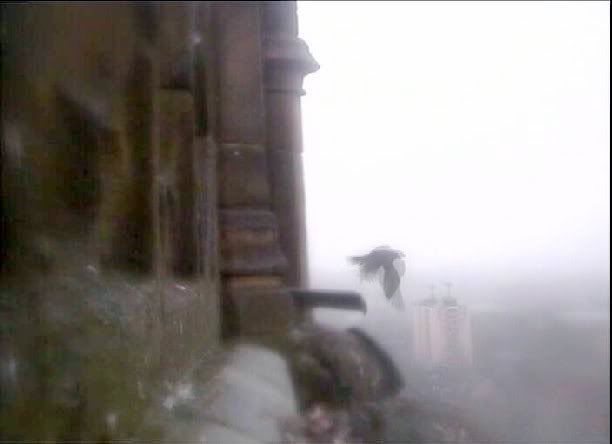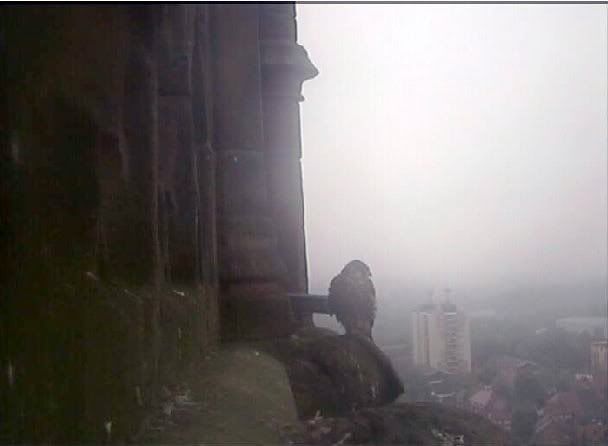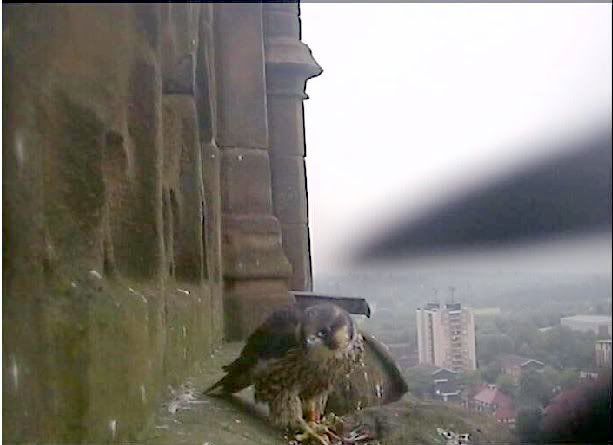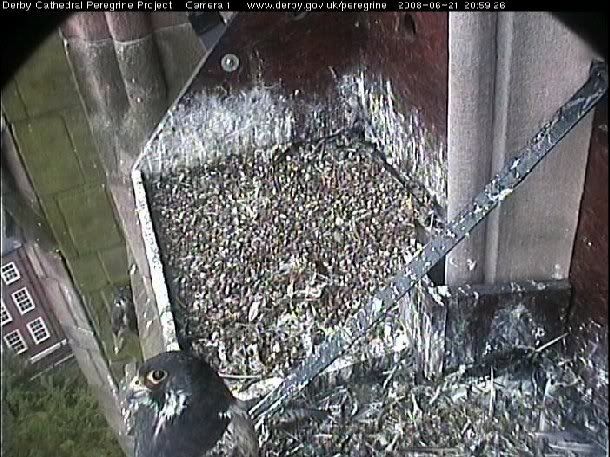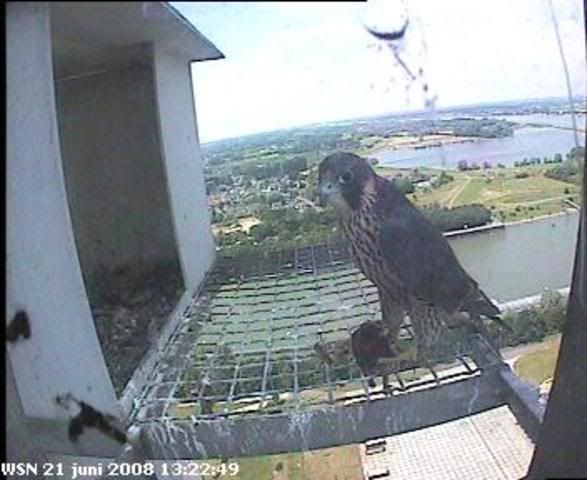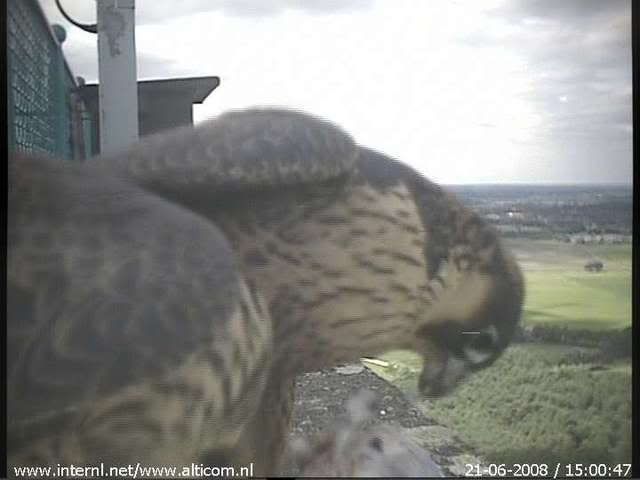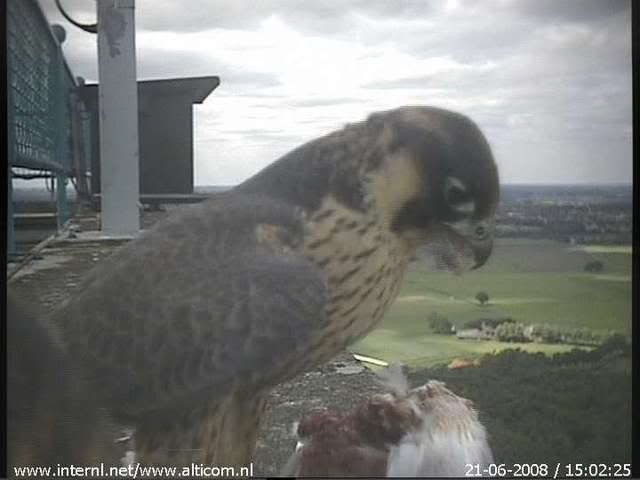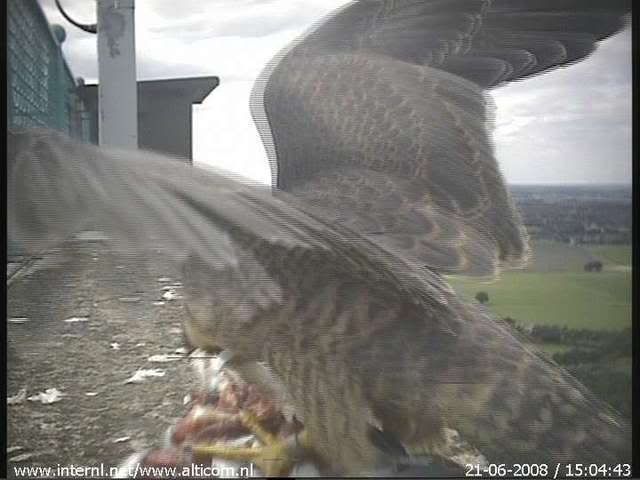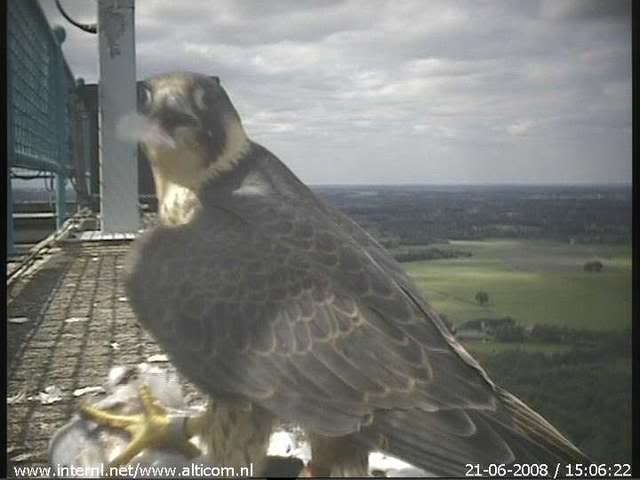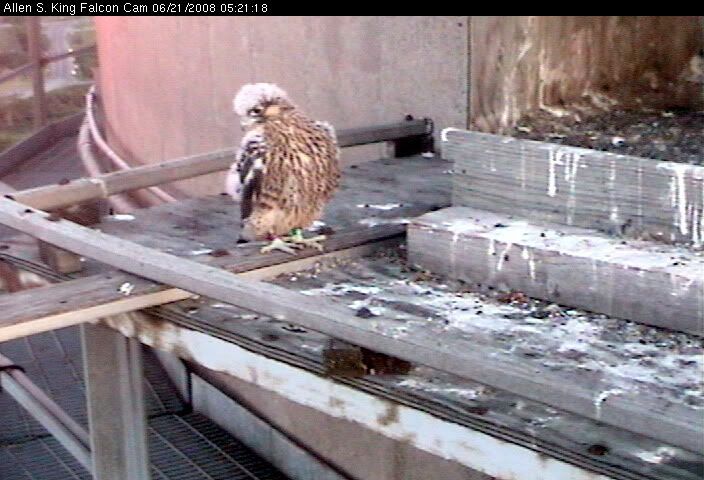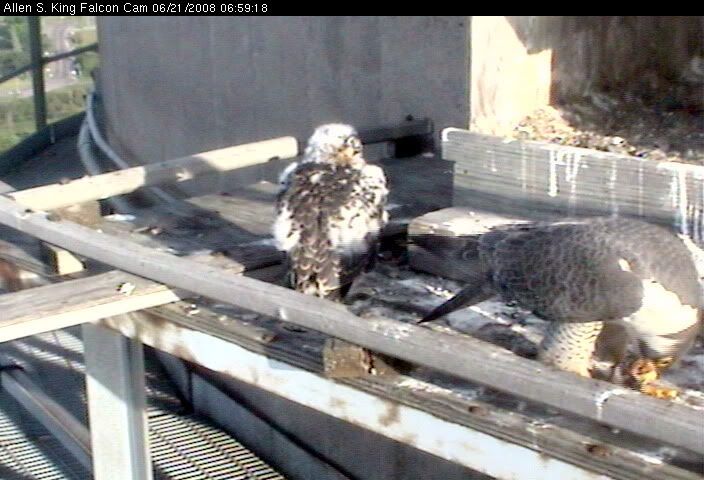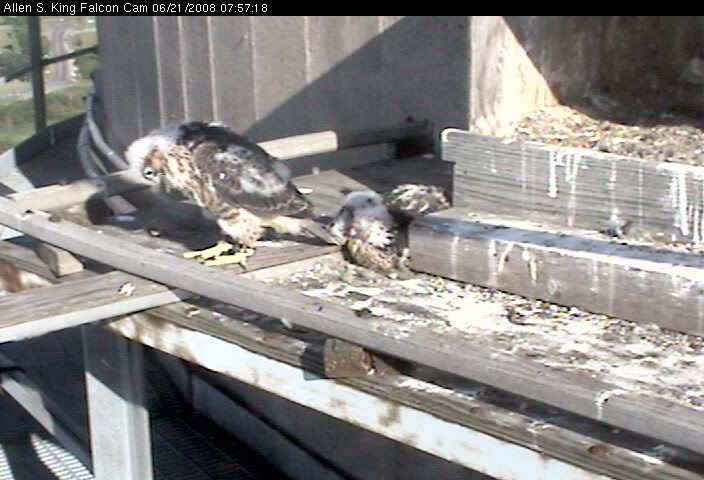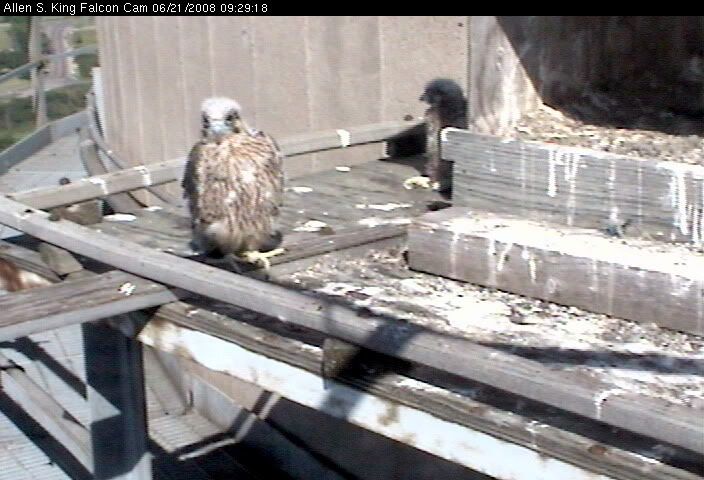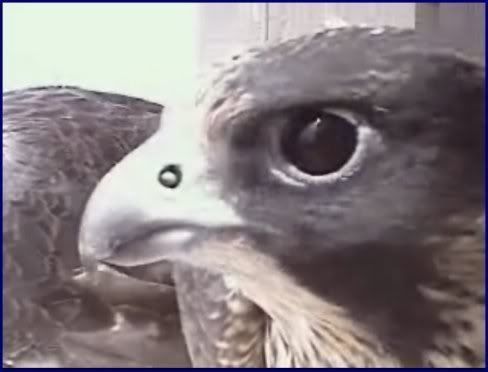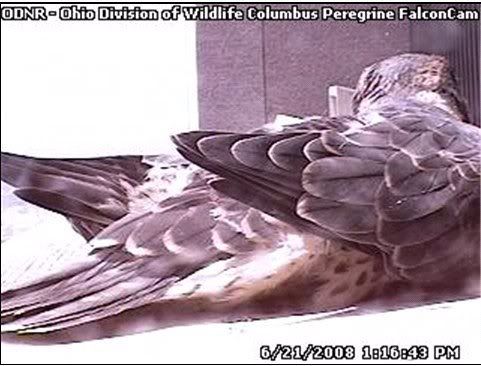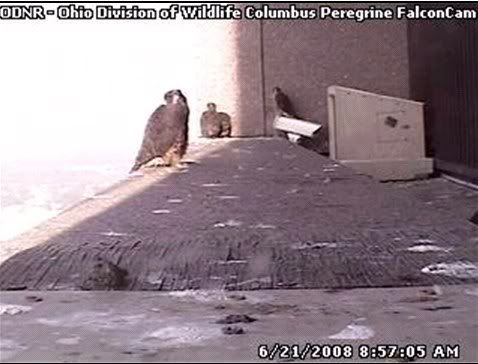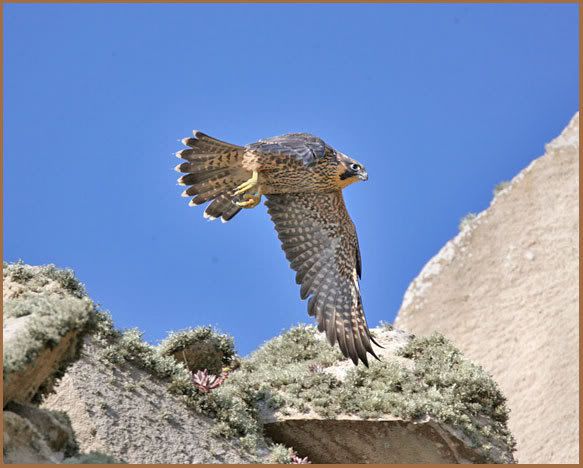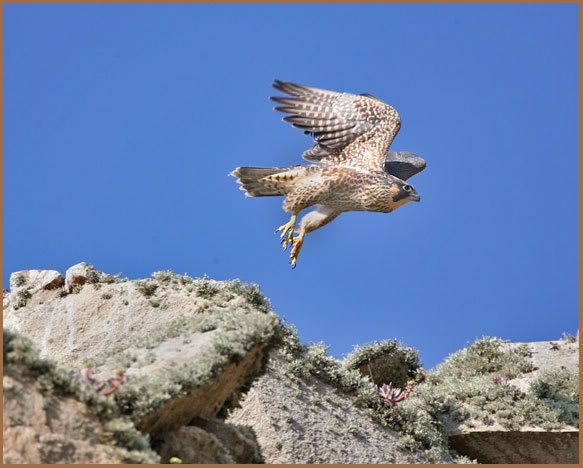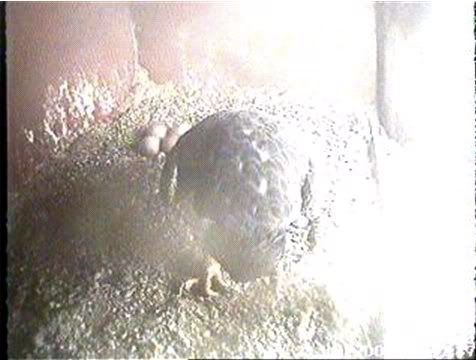
This is unique behaviour in Eemsmond. On March 12 the Eemsmond female laid her first egg. On March 15, 17 and 19 she laid the eggs 2, 3 and 4. She started breeding after she had laid the 3th egg. The first days of breeding where in cold and snowy wheather. But they where sheltered by a warm nestbox. 33 days after she started breeding the first egg should have hatched, that was around April 20. Everywhere in the Nerherlands eggs hatched around that date, but not in Eemsmond.
First we thought, give her a few days more, but still no hatch.
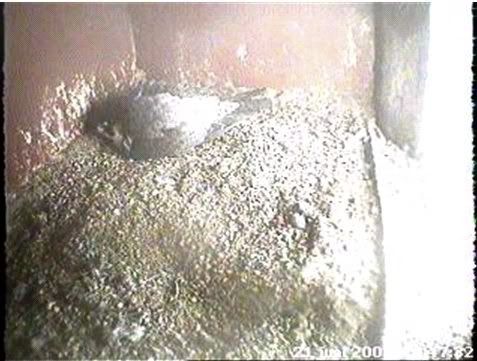
If eggs don't hatch within 5-7 days after the estimated date they won't anymore.
In these cases, the couple goes on breeding. From other cases I know they leave after 40-45 days to try again somewhere else. Or just stop breeding and leave.
But not this Eemsmondcouple. They are still breeding. And do not seem to be bothered by it. They have adjusted to this way of life, and take turns in keeping their eggs warm.
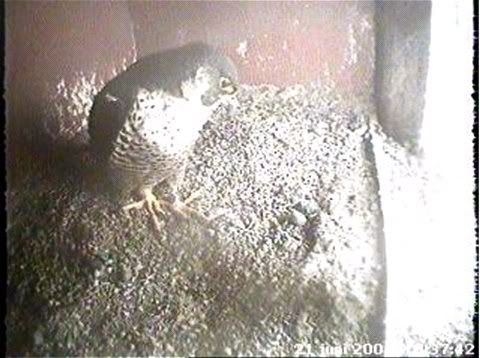
Many people have mailed me about this. How sad and pity these birds. Have asked to intervene. But please do not project your own psyche and emotions on these birds. The Peregrine falcon is one of the most intelligent birds there are. But they lack the ability to think ahead, to draw conclusions, to be aware of this being sad.
The drama in Richmond for instance was a total different thing. She saw how her eyases died, where sick, where dead in the shell. She was very very aware of the death of her eyases. And that is most stressful thing that can happen to a peregrine falcon. Broken eggs, death eyases are very disturbing and do evoke a behavioural reaction that we could almost qualify as emotions. Just recall the Richmond female. Her behaviour has made a big impression on me. I did feel a deep compassion for her.
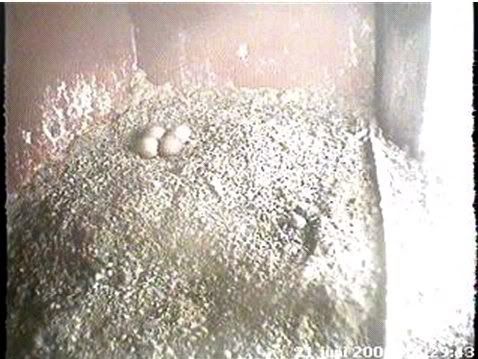
But the Eemsmond couple are not stressed. They just behave as they should when there are eggs. They seem totally relaxed.
It will end. Their hormone level will change and they will leave. They do leave the eggs for a few hours more and more in the past days.
After they have the WSN will collect the eggs for scientific research.









